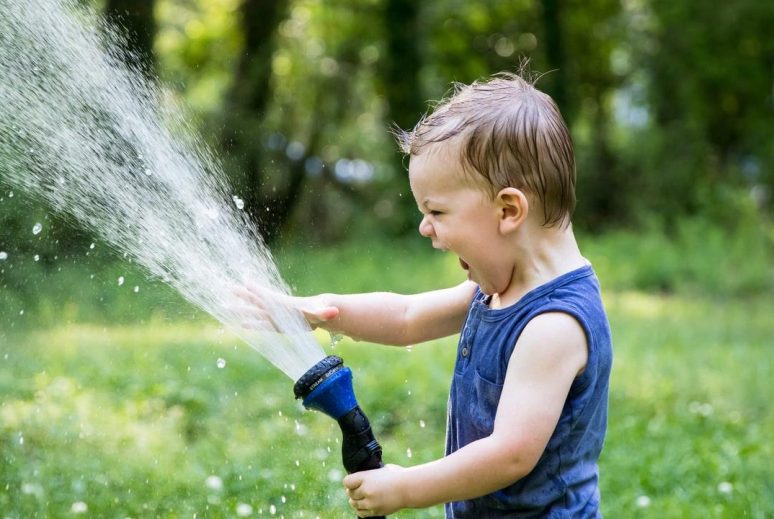Heatstroke Awareness: How To Recognize, Treat, and Prevent Heatstroke in Children
Heatstroke Awareness: How To Recognize, Treat, and Prevent Heatstroke in Children

The beginning of summer usually brings long, hot days of fun in the sun for kids. However, with increasing temperatures and humidity, your children can be at risk of developing heat exhaustion or heatstroke unless you take proper precautions. Learning the signs and symptoms of heatstroke in children can help you prevent a tragedy.
Heat Exhaustion
Signs of heat exhaustion
Symptoms of heat exhaustion include:
- Increased thirst
- Increased sweating
- Weakness
- Tiredness
- High body temperature of 100-104 degrees Fahrenheit
- Dizziness or faintingIrritability
- Heat cramps
- Cool, clammy skin
- Nausea and vomiting
- Headaches
Treating heat exhaustion
If your child is showing any symptoms of heat exhaustion, treat them immediately. Untreated heat exhaustion can develop into heatstroke. You should first get your child indoors, into an air-conditioned vehicle, or the shade immediately. Give your child cool drinks that contain salt, such as sports drinks.
Apply a cold, wet cloth to your child’s skin. If your child complains of sore muscles, gently stretch or massage them. If your child isn’t able to drink or is not responding to treatment, seek emergency help immediately. Most children with heat exhaustion recover fully within 30 minutes without further problems. However, you should check with your child’s pediatrician to ensure they don’t need follow-up care.
Heatstroke
Heatstroke is a severe heat illness that can lead to brain damage or death if it isn’t quickly treated. Heatstroke occurs when your body builds up more heat than it can release. Your core body temperature rises to dangerous levels.
Signs of heatstroke
Your child may have the following symptoms if they’re experiencing heatstroke:
- Body temperature above 105 degrees Fahrenheit
- Flush, hot skin that may be dry or wet
- Seizures
- Weakness or dizziness
- Loss of consciousness
- Severe headache
- Confusion
- Rapid breathing and heartbeat
- Nausea, vomiting, or diarrhea
Treating heatstroke
Seek medical attention or call 911 immediately if your child shows signs of heatstroke. In the meantime, bring your child inside or into the shade and undress them. Immerse your child in a tub of cool water, if available.
You can also apply cold, wet towels to your child’s body if a tub isn’t available. Replace them frequently to keep them cold.
If your child is conscious and alert, give them sips of clear, cool liquids, such as a pediatric electrolyte oral solution. It’s a good idea to keep a bottle of pediatric electrolyte oral solution on hand during the summer if you have children because that’s the best liquid for combating heat exhaustion or heatstroke. If your child is vomiting, turn their head to the side to avoid choking.
Preventing Heat-Related Illnesses
In addition to knowing and watching for the symptoms of heat-related illnesses, you should take precautions to prevent heat exhaustion and heatstroke in your children. Take the following steps to help your kids say cool:
- Make sure your children drink fluids before, during, and after they’re exposed to high temperatures – a pediatric electrolyte oral solution is ideal.
- Don’t allow your child to stay out in the heat for too long at one time.
- Avoid strenuous outdoor activities during the hottest time of the day, from 10 a.m. until 4 p.m.
- Stay in the shade as much as possible.
- Never put a blanket over your child’s car seat or stroller, as it can block airflow and cause overheating.
- Dress your child in loose, light-colored, and moisture-wicking clothing.
- Never leave your child in a vehicle alone, even for just a few minutes.
- Take steps to ensure you don’t forget your child in the back seat.
- Plan for extra rest time if your kids are playing in the heat since heat makes kids feel tired and irritable.
Babysav is a nonprofit organization that raises awareness about heat-related deaths from children and pets left in hot cars. We provide reminder signs and stickers that can be placed on entrances to buildings to reach hundreds or thousands of people rather than targeting individuals. Our solution complements other reminder systems and fills the gaps for those who may not have them.

